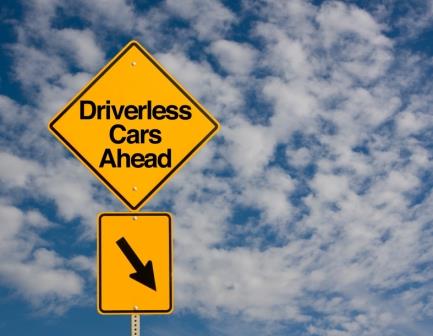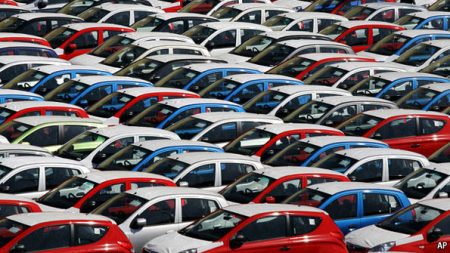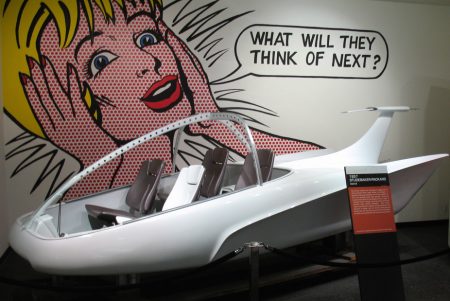January 4, 2017 – Thomas Frey is a futurist and in his latest musing about autonomous vehicles he describes them as “the most disruptive technology in all history.” Why has he come to this conclusion? I have summarized his many justifications for the position he takes but if you want to read his original posting the link is here.
In this posting I will draw from both Frey and my own speculations from past pieces written here at 21st Century Tech blog to describe why autonomous vehicles represent such a disruptive force. Until you think about you don’t realize just how much of our modern economy is built on the back of the car and other forms of transportation. When Henry Ford first started assembling mass produced cars he turned a rich-person’s plaything into a global addiction. Today we search for oil mainly to supply cars and other transport. Our cities are built for cars. Our highway infrastructure facilitates cars. And having said that the average car gets used only 4% of each day. So much of our economy is tied to something we use 4% of the time.
That’s what makes the arrival and mass acceptance of autonomous vehicles so compelling. Frey calls the move to this technology the “new normal,” where vehicle ownership will no longer drive economies and society. Instead when people need to go somewhere they will summon a car, get to where they need to be, and do the same when they need to go elsewhere or return home. That means dramatic changes to vehicle ownership. Instead of the social model of almost one car per person, we will see an autonomous vehicle for 5 to 10 of us and none of its users will own it.
Yesterday I posted the result of an MIT study which showed that 3,000 autonomous vehicles could replace 13,000 taxicabs in New York City and fulfill 98% of the transportation requirements of the city’s inhabitants daily. That leaves 2% that may need their own vehicle to get from point A to point B. Frey argues that 1 million autonomous vehicles could replace 17.5 million on today’s roads. That number represents the total of new car sales for 2015 in the United States.
It would appear, therefore, that autonomous vehicles seriously disrupt the business model of car manufacturers who will experience massive unit sale loss. Their loans and leasing income will vanish because ownership will largely pass from individuals to fleet operators who will be en masse buyers of the technology. These companies, the successors to Uber and Lyft will replace cars in driveways with on-demand transportation services capable of answering a call for a car in two minutes. Only in rural areas will car ownership persist.
Autonomous vehicles will complete the transition from internal combustion engine vehicles to those run on electricity or fuel cells. The petroleum industry will see demand for its products plummet. And urban environments will benefit dramatically. Frey asks us to imagine what the sounds and smells of cities will be like when gasoline and diesel no longer power our daily transportation. Say goodbye to ground level ozone from tailpipe nitrous oxides, carbon dioxide and particulate matter. Watch asthma and respiratory disease numbers plummet. Beijing and Shanghai citizens will once again see clear blue skies over their cities.
The form factor of cars will change as well. With no fossil-fuel-based engines to add to vehicle dimensions and weight, cars will be much smaller. Frey believes a disproportionate number will be built to transport one person. You don’t need a something very big for individual transport even if the person is carrying parcels and even if you populate the car with all kinds of electronic gadgets to pass the time in transit. Smaller numbers of on demand, autonomous vehicles will be needed for transporting larger groups such as families and clubs. The need rental car business will die as will traditional taxicabs, limousines, and shuttles.
Autonomous vehicles will impact government revenue. Today, in the U.S., 40% of state and local sales taxes come from automobile sales. Gas taxes and royalties will disappear. Highway tolls, license fees, parking fines and speeding and other traffic ticket revenue will vanish. The 30% of court generated revenue coming from automobile accidents and traffic violations will be gone. That’s no small number. For example, in 2015 New York City earned $1.9 billion alone from citizens getting ticketed. The revenue carnage will impact airports as well because today they earn 41% of their total income from vehicle-related services, particularly parking and limousine operations. Think about all the non-driving jobs impacted at cities and airports, jobs like parking attendants, traffic enforcement officers, valet services and more.
Land use will alter. Parking lots will largely disappear. The parking spaces needed will be recharge ports and fuel-cell refueling depots. Suburban malls and shopping centres, largely created for automobiles, will no longer be surrounded by hectares of open land dedicated to parking. Instead all that will be needed is designated lanes for pickups and drop offs.
Those who chose to continue to own an electric vehicle will have a home charging port. They will likely have solar panels and battery storage systems to keep home and car running. Utilities operating power stations and grids will no longer experience the same peaks and valleys in energy use as electric vehicles will continually need to draw power over 24-hours. Distributed energy, home generated or micro-grid-based, will become widespread.
Frey also talks about the autonomous vehicle impact on important labour issues that go beyond employment. With city revenue largely built on the back of urban transportation in all its forms, the impact on long-term pension commitments to retirees and present employees will no longer have a continuous funding stream. Cities may default on pension debts unless they can find a new revenue source to compensate for the enormous hit they will take. The hit to federal and state governments, also dependent on a revenue model built on the backs of fossil-fuel burning, individually-owned cars and trucks as society’s mainstay, will be equally enormous. The 20th century public revenue paradigm will be broken. Something will have to replace it.


















